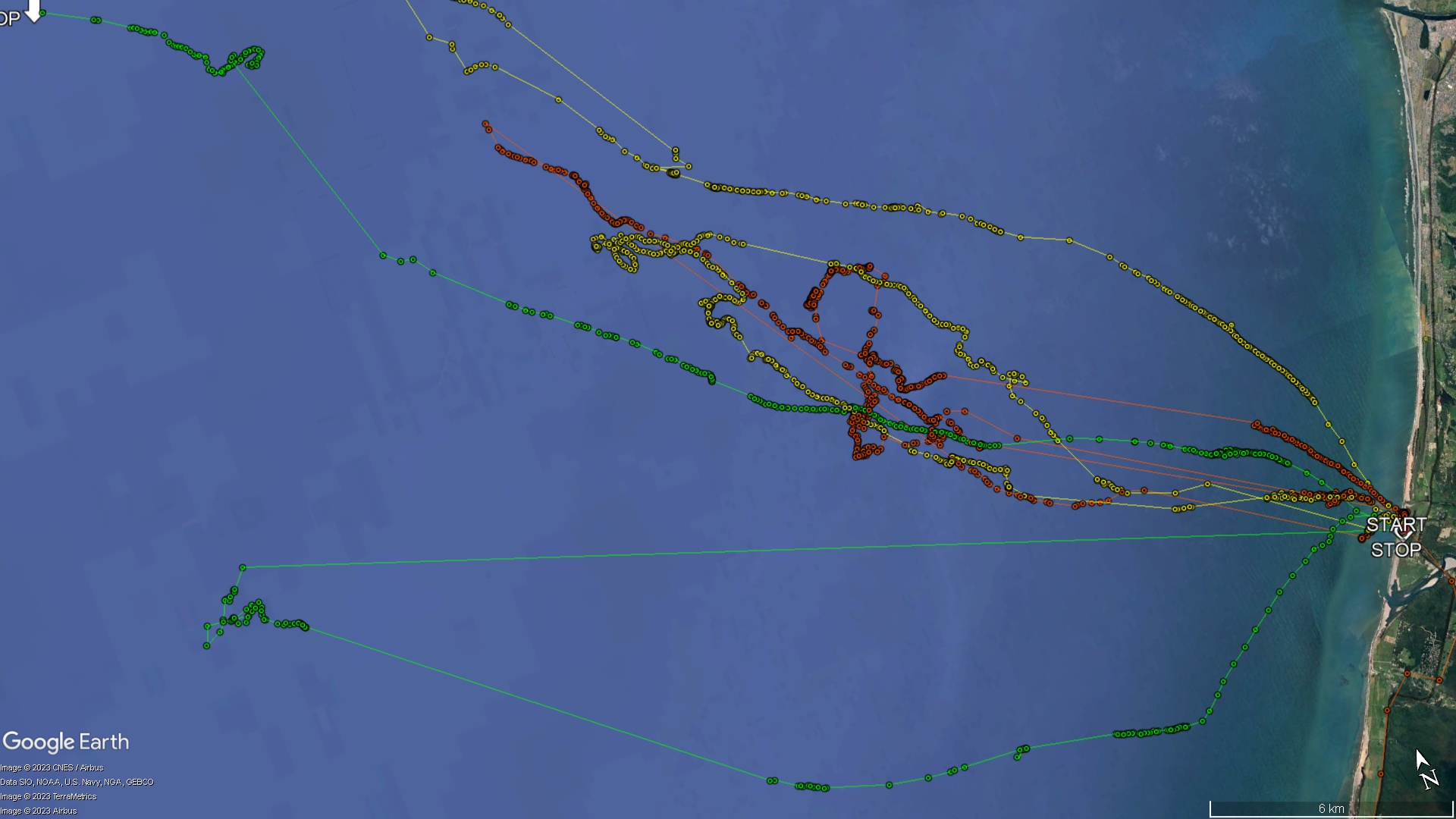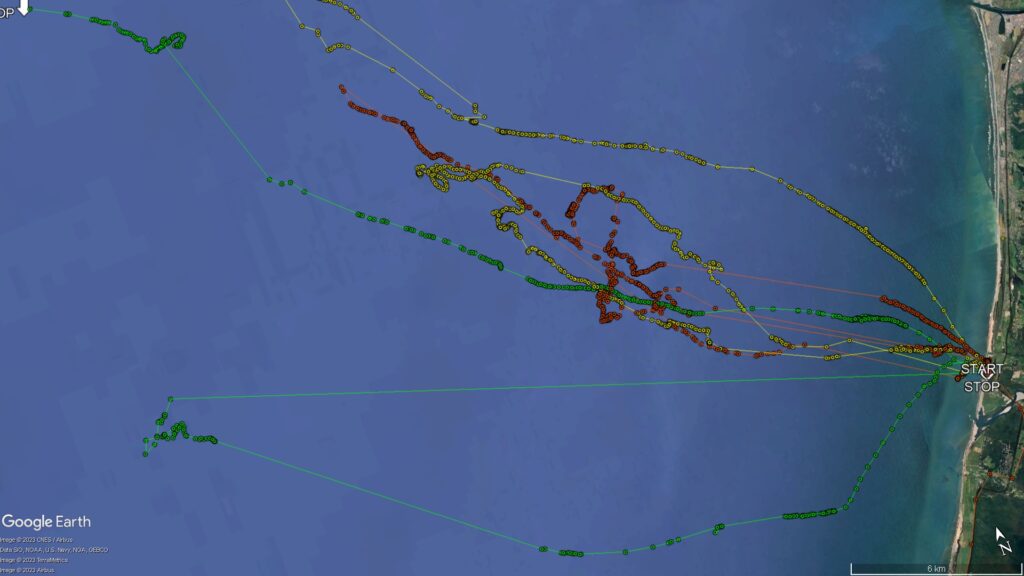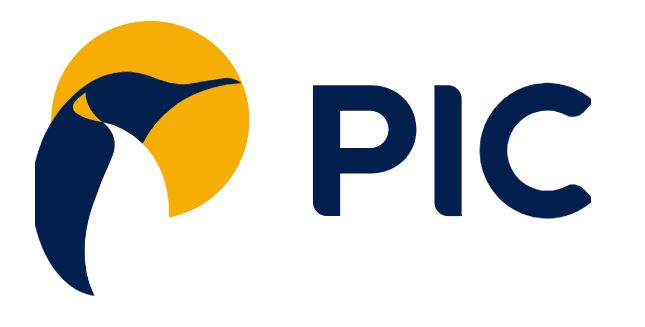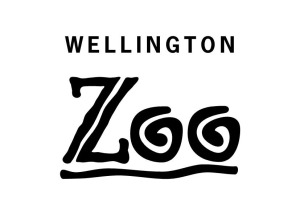
Tiny GPS units were applied to little / blue penguins during the 2015, 2016 and 2017 chick rearing seasons and the Trust collaborated with the Museum of New Zealand Te Papa Tongarewa in a wider study to better understand the foraging patterns that were discovered.
A report was published in the NZ Journal of Zoology in April 2017, led by Tim Poupart and Dr Susan Waugh of the Museum of New Zealand Te Papa Tongarewa, and included data from three sites, Wellington, Motuara Island (Marlborough) and our West Coast study. Data has been collected for five years and, for three of those years, the West Coast Penguin Trust carried out the field work at Charleston and Cape Foulwind. Altogether the study includes tracks gathered on 68 individuals in three regions of central New Zealand between 2011 and 2016.
Foraging patterns varied between sites and between years. Tracks revealed that penguins can rely on distant foraging areas while incubating, with nesting birds from Motuara Island travelling up to 214 km to feed. Isotope analyses of blood samples showed that this distant food from deep waters (0–200 m deep) is likely to be squid dominated, which has a low nutrition value. During the chick rearing period, birds undertook a diet shift to a higher trophic level while foraging closer to their colony, and possibly near river plumes.
These findings highlight the need to consider much larger potential foraging ranges when assessing and managing threats to the penguins. The research team, including the Trust’s Kerry-Jayne Wilson and Reuben Lane, advise that conservation efforts need to take this variation into account to protect these penguins, which are currently in decline across New Zealand.
The Trust continued the project in 2019 with the support of the New Zealand Penguin Initiative. The NZPI was able to supply GPS trackers that also measured dive depths and although only two tracks were obtained, the information was very interesting and useful. Read more here.
The study continued in 2020 with greater success and 11 tracks obtained illustrated below.

After a gap in 2021 due to ranger changes, hopes to continue and expand the foraging study during the 2022 season were abandoned due to the obvious stress being experienced by the penguins due to the marine heatwave. It was picked up again for the 2023 season with new Ranger, Lucy Waller, and focused on the early chick stage when adults would be taking turns to forage and feed the chicks. The Camerons colony was used for the study this year and the six tracks obtained indicate a similar pattern to earlier results from the Charleston colonies, in terms of direction and distance, but more detailed analysis is required, including of the depths of dives also recorded on the loggers.
We are very grateful to the Brian Mason Trust and the Lottery – Environment & Heritage Fund, for their support for this project this and next season.

We expect additional analysis of foraging areas in relation to other marine influences including currents, climate events and commercial fishing, to follow at some point, and for now, we’ll be focusing on ensuring consistency of process to collect data annually and contribute to an understanding of the foraging activity of blue penguins on the West Coast through the four key stages of the annual life cycle, namely incubation, chick rearing, pre and post moult.
We’d like to thank the JS Watson Trust (managed by Forest & Bird) for their support, Te Papa for their collaboration, and Dr Thomas Mattern for generous help, guidance and expertise.










 Some key points were the average dive depth of 4.29m and average range from home of 26.02kms.
Just three dives of the several thousand recorded were over 20m. In ‘ordinary’ foraging conditions, penguins will generally not be diving deeper than 10m.
The furthest point from home reached by these three penguins was 36.4kms. Other data needs to be interpreted in light of battery failures before the loggers were recovered in 5 out of six trips.
The impact of climate change and marine heatwaves with likely increasingly adverse effects on little penguins is a concern. The adverse effect is possibly due to intensified stratification resulting in reduced mixing of surface and deeper water. Thus increases in turbidity after rain events take longer to dissipate because sediments are trapped at the surface. As a consequence, the penguins have to travel further away from the coast to reach cleaner water where they can see adequately to catch prey.
Stratification can also disrupt the usual vertical nutrient flow potentially resulting in higher productivity and algal blooms at the surface, which may also inhibit visibility.
Key insights from data obtained so far:
Some key points were the average dive depth of 4.29m and average range from home of 26.02kms.
Just three dives of the several thousand recorded were over 20m. In ‘ordinary’ foraging conditions, penguins will generally not be diving deeper than 10m.
The furthest point from home reached by these three penguins was 36.4kms. Other data needs to be interpreted in light of battery failures before the loggers were recovered in 5 out of six trips.
The impact of climate change and marine heatwaves with likely increasingly adverse effects on little penguins is a concern. The adverse effect is possibly due to intensified stratification resulting in reduced mixing of surface and deeper water. Thus increases in turbidity after rain events take longer to dissipate because sediments are trapped at the surface. As a consequence, the penguins have to travel further away from the coast to reach cleaner water where they can see adequately to catch prey.
Stratification can also disrupt the usual vertical nutrient flow potentially resulting in higher productivity and algal blooms at the surface, which may also inhibit visibility.
Key insights from data obtained so far:















